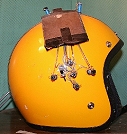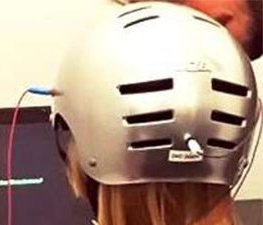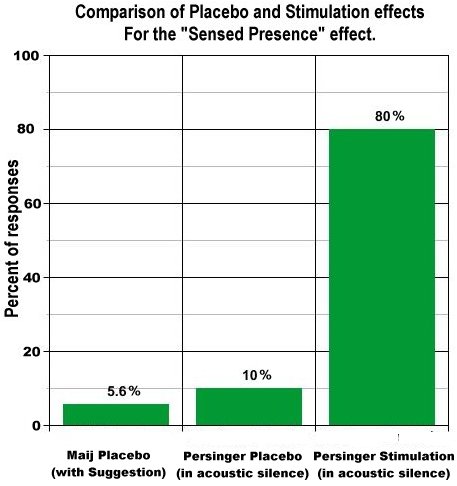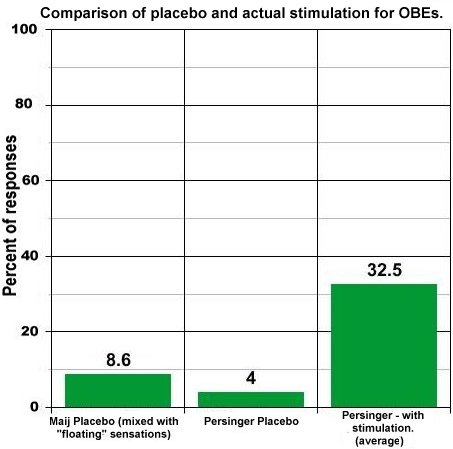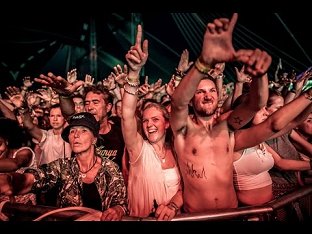
Thanks are due to the late Dr. Michael Persinger for his extensive help.
Persinger’s Endorsement.
The God Helmet ®, part of the Shiva Neural Stimulation System.
Phone:(855) 408-7888
A Reply to the “Fake” God Helmet Experiment.

Persinger’s Endorsement.
The God Helmet ®, part of the Shiva Neural Stimulation System.
Phone:(855) 408-7888
In August 2016, Dutch researcher David Maij and his colleagues did a strange study, carried out not in a laboratory, but in a Dutch music festival (The Lowlands Festival). They invited people attending the festival to undergo a placebo procedure using a helmet wired up to look as though it could deliver actual brain stimulation. In fact, it was a “dummy” device that didn’t do anything. They even named it after a well-known real brain stimulation method.
It’s called the God Helmet, and it isn’t a placebo device. It delivers low intensity, magnetic signal stimulation to the brain, and these magnetic fields are embedded with signals taken from EEG recordings that originated in specific brain parts. The God helmet was developed by Dr. Michael Persinger and Stan Koren of Laurentian University’s neuroscience program.
Maij’s paper said:
“Participants were recruited at Lowlands, a large three-day Dutch Music Festival with over 50,000 visitors and a stage dedicated to science (i.e., Lowlands science). The study was advertised in the program booklet as “Tripping with the … Helmet: Researchers of the University of Amsterdam will electromagnetically stimulate your brain to elicit spiritual experiences.”
Obviously, the words they used to invite people to receive sessions with their placebo device were a strong and unambiguous suggestion. One must wonder what their results would have been if they told their subjects they’d be participating in a relaxation experiment, as Persinger told his subjects.
Their study’s main purpose was to find out if alcohol would make people more suggestible to a spiritual experience using only suggestion and a placebo. As it happens, alcohol didn’t make them more suggestible. They reported that the people most likely to respond to the suggestion that they’d have a spiritual experience were the ones who identified themselves as being very spiritual. Of course, such people would know what a spiritual experience felt like (for them), and would like to have such moments again.
20 years earlier, Michael Persinger published a paper showing 1) that there was an association between suggestibility and one brain marker for it (with the cumbersome name of “complex partial epileptic-like signs”), and 2) that the same marker is also found in people with strong religious and paranormal beliefs. To put it simply, these are signs of sensitive temporal lobes (one of the sources of spirituality), such as deja vu, sensing a presence, illusory sensations of motion, and several others. Spiritual people are also more likely to be suggestible, but these are two separate expressions of the same underlying neural “profile,” (temporal lobe sensitivity). Spirituality doesn’t cause suggestibility, or vice-versa. Currency and passports may be issued by the same government, but neither one causes the other. Suggestibility may even be a valuable social skill.
For example, a spiritually inclined person can be raised with the suggestion that compassion, generosity, charity and forgiveness are important virtues. When they act out these traits later on in life, they find that people around them appreciate them, and that they receive gratitude and respect for their kind actions. The suggestion that “they are their brother’s keeper,” is verified in their life experiences, and emerges as a real truth. If a belief doesn’t work for them, they’ll eventually change it, or just forget it.
The fake stimulation helmet
The placebo headset Maij used in his experiment has nothing to do with Persinger’s helmet, or any other kind of brain stimulation. Let’s do a thought experiment to see this. Let’s imagine that, instead of using placebo brain stimulation, the same researchers had advertised that they would provide a new, legal, fast acting, and harmless shamanic hallucinogen. Instead of giving volunteers an actual hallucinogenic compound, they provided sugar pills. Would some people respond, and report otherworldly experiences from it? Obviously, yes, some would. Suppose we did the same thing with a new “miracle” strain of marijuana, one that puts you into specifically spiritual or mystic states of mind, instead of getting you “high.” Would some people respond? Again, yes. Maij’s experiment was less about a placebo helmet, and more about the placebo effect itself.
Comparing Placebo to Actual God Helmet Stimulation
Maij’s subjects were asked about a wide range of experiences, some of which weren’t really spiritual, such as sleepiness or relaxation, or the sensation that their arms, legs, or head felt heavy. Another one was “stress / heart rate increase / (felt) hot / sweat.” They also asked about hearing music in one’s head, which is only to be expected during a music festival, (for those who are prone to it). Nevertheless, Maij did ask about a number of clearly spiritual experiences. Only two of these matched experiences Dr. Persinger studied in his research: out-of-body experiences (OBEs) and the feeling of a presence, which Persinger called “the sensed presence”. Dr. Persinger’s God Helmet experiments did use placebo controls, although he referred to the placebo condition in his experiments as “sham” stimulation (e.g. “the sham condition”).
Maij’s subjects were told they would have a spiritual experience. Dr. Persinger told his subjects they were participating in a relaxation experiment. He was very careful to prevent his subjects from knowing what his experiments were actually about.
The Sense of a Presence – Maij’s placebo results are much Lower than Persinger’s results with Actual Stimulation.
Dr. Persinger reported that about 10% of his control (placebo) subjects reported a sensed presence, compared to about 80% who reported the same sensation using his most effective procedure. In fact, Maij reported a somewhat lower number (5.6%) from his music festival experiment. The difference reflects the different methodologies.
Persinger carried out his experiments in a completely soundproof chamber that also blocks out all electromagnetic emissions, creating an optimal environment for a person to feel a presence. Without the Persinger’s magnetic signal stimulation, it creates the sense of a presence in about 10% of the subjects. When the stimulation is also used, the number increases to 80%. Maij also reported that some of his subjects (7.8%) saw “agents, people or shadows”. Without having this category broken down, it’s hard to be sure, but it looks like Maij’s placebo helmet found a number of presences or other beings that was close to what Persinger saw in his placebo subjects. Persinger used complete sensory deprivation, and gave the subjects no idea what the experiment was about. Maij did the opposite. He used minimal sensory deprivation, after telling them that they would “trip” with the helmet.
Out-of-body Experiences (OBEs) – Maij’s placebo results are much less than Persinger’s – with Actual Stimulation.
Maij also reported a category of experience, given as “out of body or floating.” Of course, the sensation of “floating” isn’t the same as an out-of-body experience, although both involve the subjective experience that one’s body is moving when it’s actually still (some people have floating sensations while falling asleep, but not OBEs). It’s difficult to be sure without having Maij’s category broken down into 1) out-of-body experiences and 2) sensations of floating. It looks like 8.6% of Maij’s subjects reported out-of-body experiences (or something similar) without any stimulation.
In contrast, 28 to 37% Dr. Persinger’s stimulation subjects reported them (depending on the subjects and conditions) with actual God helmet stimulation 3.5 to 4.3 times more often than Maij’s did. The God helmet is not a placebo device. If it were, Maij and Persinger would’ve each reported about the same numbers of OBEs. Extrapolating from Persinger’s numbers for the sensed presence, we get an estimated 4% for how often he got OBEs in his placebo condition.
Here’s a simple layout of the numbers:
_____
Sensed Presence:
Maij – Presence – during music festival – placebo = 5.6%
Persinger – Presence – (ultra-silent chamber) – placebo = 10%
Persinger – Presence – (ultra-silent chamber) – with stimulation = 80%
_____
Out-of-Body Experiences:
Maij – OBEs – during music festival – placebo = 8.6% (may be inaccurate – mixed w/ “floating” sensations)
Persinger – OBEs – (ultra-silent chamber) – placebo = (est.) 4%.
Persinger – OBEs – (ultra-silent chamber) – with stimulation = 28 to 37%
NOTE: It’s hard be sure what percent of Maij’s subjects were reporting OBEs. He mixed them with “floating” sensations, so the actual number is probably lower.
It’s also hard be sure what percent of Persinger’s subjects had OBEs in his placebo condition because we’ve extrapolated our estimate from his data on the sensed presence. The sensed presence is more common than OBEs, so the actual number in the placebo condition is also probably lower.
Article continues after charts.
Click to see up-close.
“White Noise”
Persinger’s subjects were kept in complete (“acoustic”) silence during their God Helmet sessions. In contrast, Maij’s subjects listened to “white noise”. He should have known that the combination of white noise and suggestion had already been shown to elicit hallucinatory experiences. A study that showed this was even done in the Netherlands. In that study, subjects listened to white noise after being asked to press a button when they heard Bing Crosby singing “White Christmas” through the noise. In fact, they never played the song at all. About 1/3rd pressed the button anyway. They were expecting to hear the song and that expectation, together with the white noise, was enough for them to hear a sound that wasn’t there. That study also found that the ones who hallucinated the sound of Bing Crosby’s voice were more prone to fantasy than hallucinations. Maij may not have known about this study, and it appears that he didn’t check his subject’s level of fantasy proneness. Instead, he looked at self-reported interest in spirituality.
An almost identical study was carried out in Australia (suggesting that subjects would hear the exact same song), with very similar results. It also monitored the effects of caffeine. Caffeine produced higher levels of reports of subjects hearing the nonexistent song. Maij didn’t ask his subjects of they had taken caffeine on the day of the experiment. He asked about alcohol. The data is a little old, but most Dutch drink about 3 cups of coffee per day.
A similar effect was seen in a study that found that masking the last word in a sentence with white noise was enough for many subjects to hear the word they expected, and not the one that was actually used.
It’s not impossible that all of Maij’s effects were due to the combination of expectation and white noise “auditory tasking.” It would take more experiments to find out.
In any case, auditory tasking with white noise is not a placebo. It’s an actual stimulation, known to enhance auditory hallucinations. Maij reported that 28% of his subjects (n=54) reported them (as voices, music or other sounds). It remains an open question whether white noise contributes to visual hallucinations (no studies have been done), and how large or small its effects might be.
The Set and Setting.
It may look like the reason why Maij was able to elicit reports of spiritual experiences from sham brain stimulation (combined with real auditory white noise stimulation) was because he had planted a suggestion in his subjects, telling them that’s what was going to happen. However, the “set and setting” of the music festival almost certainly played a role, too. A music festival has a lot in common with a religious festival. Both involve music and dancing as well as being in a crowd of like-minded people. Both are also supposed to be places where you “forget your troubles” and get involved in what’s happening now. Both are supposed to be celebratory environments. Both can be quite loud at times. There are many religious moods, and some of them are quite boisterous. Spending some time in a festival, before going to pursue a spiritual experience, could increase a person’s chances for having one. Some Catholics have had particularly meaningful confessions after attending a Catholic festival, like a street procession or public mass.
A music festival can be a lot like a secular religious event.
Dr. Persinger developed a concept that applies here. He called it the “interhemispheric intrusion hypothesis.” Briefly, it says that building up activity in one side of the brain, and then suddenly shunting it over to the other, (so it “intrudes” into the left side of the brain) can create a spiritual experience. Throughout much of his work, Dr. Persinger explored the effects of building up neural excitement on the right side of the brain, and then encouraging it to find its way over to the left side of the brain. This process, which he elicited through neural stimulation using his magnetic signals (carried by weak magnetic fields), resulted in a few his subjects having experiences of God, as well as angels, spirit beings, and the spirits of deceased people known to the subject.
In Maij’s experiment, the neural tasking (the “intrusion”) went in the opposite direction. His subjects were attending a music festival, with its loud, celebratory and energetic environment. They left a space filled with music and dance, and then they were suddenly immersed in sensory deprivation, including darkness, quiet, and solitude. The rapid change from light to darkness, music to white noise, and from being surrounded with people to being alone would also have contributed to their experiences. The silence they found after leaving the music and putting on Maij’s headset would be more powerful than the same silence at the end of a quiet day. The relaxation appearing after excitement (“arousal”) is always more pronounced than it is after a boring day. A music festival looks like a natural way to build up excitement on the left side of the brain. Putting on a helmet and a blindfold, as well as masking background sounds with white noise, would abruptly replace it with excitement in the right hemisphere, and that can make it easy to have a spiritual experience – in the right circumstance.
Maij’s placebo effects are either comparable to Persinger’s placebo effects, or significantly lower than Persinger’s results with actual stimulation, when we can compare the two. Comparing them is a little difficult, because of their different methods of gathering data. However, the significant differences between Maij’s measures of specific experiences in the placebo condition, and Persinger’s measures of the same experiences from real stimulation with magnetic signals makes it clear that the God Helmet’s effects are not due to placebo effect or suggestibility.
Maij’s placebo results match Dr. Michael Persinger’s, which, if anything, helps to confirm Persinger’s research findings. In short, Maij’s experiment was an exploration of the placebo effect as well as the effects of white noise and suggestion, but not the God Helmet.
An overview of the controversy over the God/Koren Helmet.
Todd Murphy
_______
UPDATE: In 2019, this same research group found that one of the people involved in their “placebo” studies had been faking their data. The student was banned from the university, but no publications have been retracted.
“I still remember the shock when sitting behind the lab computer I discovered that almost all logfiles of the experimental task of the first study had been generated on the same date! This was impossible … he even faked the psychophysical data in a direction that was compatible with the hypothesis (that the placebo was as effective as the actual stimulation).
_______
End.
Also of interest: God Helmet experiment has been replicated
Read “Sacred Pathways: The Brain’s Role in Religious and Mystic Experiences.” Forwards by Dr. Michael Persinger and His Holiness, the Dalai Lama. Available on Amazon.com
References:
Persinger, M.A., 1994. Elicitation of “childhood memories” in hypnosis-like settings is associated with complex partial epileptic-like signs for women but not for men: implications for the False Memory Syndrome. Perceptual and motor skills, 78(2), pp.643-651.
Persinger, M.A., 1993. Paranormal and religious beliefs may be mediated differentially by subcortical and cortical phenomenological processes of the temporal (limbic) lobes. Perceptual and Motor Skills, 76(1), pp.247-251.
Persinger, M.A. and Healey, F., 2002. Experimental facilitation of the sensed presence: Possible intercalation between the hemispheres induced by complex magnetic fields. The Journal of nervous and mental disease, 190(8), pp.533-541.
Persinger, M.A., 1995. Out-of-body-like experiences are more probable in people with elevated complex partial epileptic-like signs during periods of enhanced geomagnetic activity: a nonlinear effect. Perceptual and Motor Skills, 80(2), pp.563-569.
Merckelbach, H. and van de Ven, V., 2001. Another White Christmas: fantasy proneness and reports of ‘hallucinatory experiences’ in undergraduate students. Journal of Behavior Therapy and Experimental Psychiatry, 32(3), pp.137-144.
Crowe S.F. (et al.) “The effect of caffeine and stress on auditory hallucinations in a non-clinical sample” Personality and Individual Differences, Volume 50, Issue 5, April 2011, Pages 626-630
Maij, David LR, Michiel van Elk, and Uffe Schjoedt. “The role of alcohol in expectancy-driven mystical experiences: A pre-registered field study using placebo brain stimulation.” Religion, Brain & Behavior (2017): 1-18.
Note: Images Reproduced under Fair Use Act.
The Shiva Neural Stimulation System is ________ Gaia.com article on the God Helmet. ________ Review article by Dr. Michael Persinger: ________ . . .♦♦♦
$649.00 Plus Shipping
(Shipping – $20.00 in the USA & $40.00 for all other countries)ORDER THE SHIVA SYSTEM
INCLUDING THE GOD HELMET HARDWARE AND SOFTWARE
NOTE: The God Helmet is one of the Configurations for The Shiva Neural Stimulation System.
Contact us.
In the USA and Canada, you can order by calling 24/7 (Toll-Free)
(855) 408-7888
Read the Terms and Conditions before you call.Legal: God Helmet Stimulation signals are based on the God Helmet signal templates licensed by Stan Koren and Dr. Michael A. Persinger.
The Shiva System and (it’s sibling technology), the God Helmet does not prevent, diagnose or treat any medical disorders.The God Helmet Experiments (Book)
Experimental simulation of the God Experience using the God Helmet
THE GOD HELMET is a trademark (serial number of 90072427).
